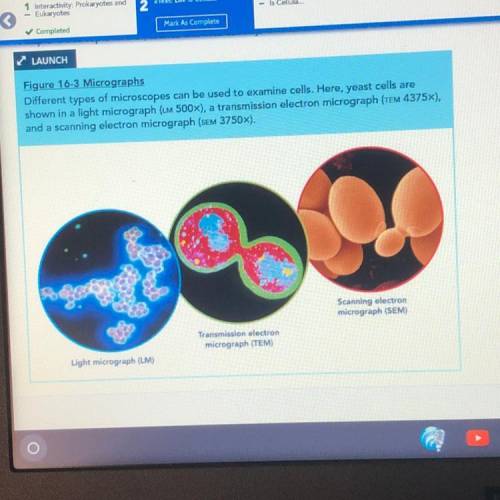
Biology, 08.01.2021 01:10 joshuag5365
6. Integrate Information Review the micrographs of cells shown in Figure 16-3. What
information about cells do these micrographs show? What information might the
micrographs suggest, which might not be accurate?


Answers: 2


Other questions on the subject: Biology

Biology, 22.06.2019 03:00, sophiav9780
Where does all the water go? according to the environmental protection agency (epa), in a typical wetland environment, 39% of the water is outflow; 46% is seepage; 7% evaporates; and 8% remains as water volume in the ecosystem (reference: united states environmental protection agency case studies report 832-r-93-005). chloride compounds as residuals from residential areas are a problem for wetlands. suppose that in a particular wetland environment the following concentrations (mg/l) of chloride compounds were found: outflow, 60.4; seepage, 73.7; remaining due to evaporation, 26.4; in the water volume, 46.8. (a) compute the weighted average of chlorine compound concentration (mg/l) for this ecological system. (round your answer to one decimal place.) mg/l (b) suppose the epa has established an average chlorine compound concentration target of no more than 58 mg/l. does this wetlands system meet the target standard for chlorine compound concentration? yes. the average chlorine compound concentration (mg/l) is too high. yes. the average chlorine compound concentration (mg/l) is lower than the target. no. the average chlorine compound concentration (mg/l) is lower than the target. no. the average chlorine compound concentration (mg/l) is too high.
Answers: 3

Biology, 22.06.2019 04:20, yahnna8
When in solution, a molecule that moves slowly across an artificial membrane moves rapidly across a plasma membrane. this molecule rapidly enters the cell regardless of whether its concentration is higher inside or outside the cell. using this information, which transport mechanism is most likely to be responsible for the movement of the molecule across a plasma membrane? view available hint(s)when in solution, a molecule that moves slowly across an artificial membrane moves rapidly across a plasma membrane. this molecule rapidly enters the cell regardless of whether its concentration is higher inside or outside the cell. using this information, which transport mechanism is most likely to be responsible for the movement of the molecule across a plasma membrane? active transportexocytosis
Answers: 2

Biology, 22.06.2019 08:10, donnafranks2003
Use the phylogenetic tree to the right to determine which statement below is true. organisms a and f are not related. organism e is more closely related to organism b than organism f. organisms c and d are more closely related than organisms a and b. phylogenetic trees
Answers: 2

Biology, 22.06.2019 09:30, ylianafghgfdsnm1479
Natural resources are any materials that humans obtain from the earth to meet our wants and needs.
Answers: 3
You know the right answer?
6. Integrate Information Review the micrographs of cells shown in Figure 16-3. What
information abo...
Questions in other subjects:


Mathematics, 04.09.2020 21:01




Mathematics, 04.09.2020 21:01


Mathematics, 04.09.2020 21:01

Chemistry, 04.09.2020 21:01



